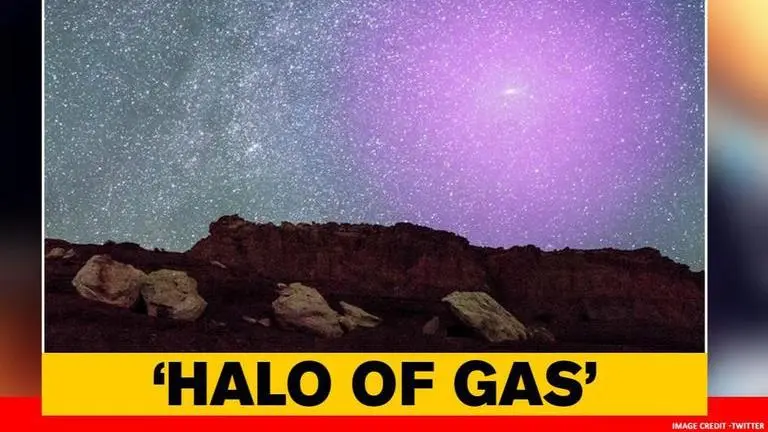Updated 1 September 2020 at 09:03 IST
NASA's Hubble Telescope maps giant Halo around Andromeda galaxy, leaves netizens amazed
NASA's Hubble telescope has captured an eye-catching giant halo of gas around Andromeda galaxy, which is the nearest from the Milky Way.
- Science News
- 2 min read

NASA's Hubble telescope has captured an eye-catching giant halo of gas around Andromeda galaxy, which is the nearest from the Milky Way which extends 1.3 million light-years. According to NASA, the original Supernova explosion was larger than the sun. On Thursday, NASA shared a picture of this giant halo on its Hubble telescope's official Twitter handle which received interesting reactions from netizens.
Hubble recently mapped out the halo of gas around the Andromeda Galaxy. It’s too faint to see, but at some points it extends almost halfway to our Milky Way Galaxy!
— Hubble (@NASAHubble) August 27, 2020
This illustration shows what we’d see from Earth if the halo was visible to the naked eye: https://t.co/8TbcIhI0lO pic.twitter.com/yoTwNoVFiQ
Netizens react
The recent post shared by NASA's Hubble telescope's official Twitter handle has invited a lot of reactions from the netizens. Some say that this star explosion caused a black hole while others say that it will take 2,400 light-years for this Supernova blast to reach the earth. Some people appreciated NASA for this picture, while some expressed their desire to take a spaceship and go there. Have a look at the various reactions posted on Twitter.
Advertisement
As simple as it sounds,mirroring,let's say is a magical way in seeing that we are all part of a Grand Design in all spiritual creation throughout the Star's 🌟🌟🌟 and the known universe❤✋😔 pic.twitter.com/eKOpy1a1nq
— DavidSommer (@DavidSommer963) August 28, 2020
Dear @NASAHubble how can I locate the Andromeda Galaxy during the cloudless night through naked eye?. I have tried for 7 years.
— Alex Yegon (@AlexYegon) August 27, 2020
I think I'm going to take a spaceship and go live there
— Michael Stefanescu (@SaikoSqueaks) August 27, 2020
@GloriousArcadum
— Mhurgle (Zappa d'Killa-Kloon) (@mhurgle) August 27, 2020
Is that..? pic.twitter.com/oQJNow9vH3
Beautiful but unreal for human eyes, thanks.
— Marco Valerio Marcial ꙮ (@marcovaleriomar) August 28, 2020
NASA's Hubble telescope captures 'veil-like' Supernova Blast
Earlier Hubble telescope also detected two Supernovae, SN 1971D and SN 2017erp in the galaxy in May 2020 formed due to luminous explosions. According to NASA scientists, the phenomenon was “brighter than any other star in the night sky.” However, scientists said that the “brightest supernova ever recorded.” Supernova in the galaxy is SN 1006, which exploded in Milky Way galaxy and shone “16 times as bright as Venus from April 30 to May 1, 1006 AD.”
According to NASA scientists, a Supernova blast is a 'super-powerful and extremely bright explosion of a star in space' which happened 10,000-20,000 years ago. The remnants of the dead stars expanded 60 light-years from its centre at a speed of 220 miles per second in Andromeda Galaxy. Scientists observed the shockwaves emanating out of the dead stars that marked the outer edge of the supernova. NASA explains in the release that the interstellar material interacted with the burst material that spiralled outwardly which led to the formation of a veil-like stellar structure due to powerful explosion.
Advertisement
Published By : Gargi Rohatgi
Published On: 1 September 2020 at 09:03 IST
